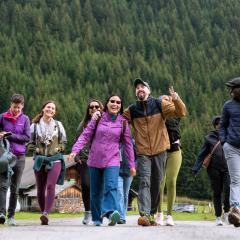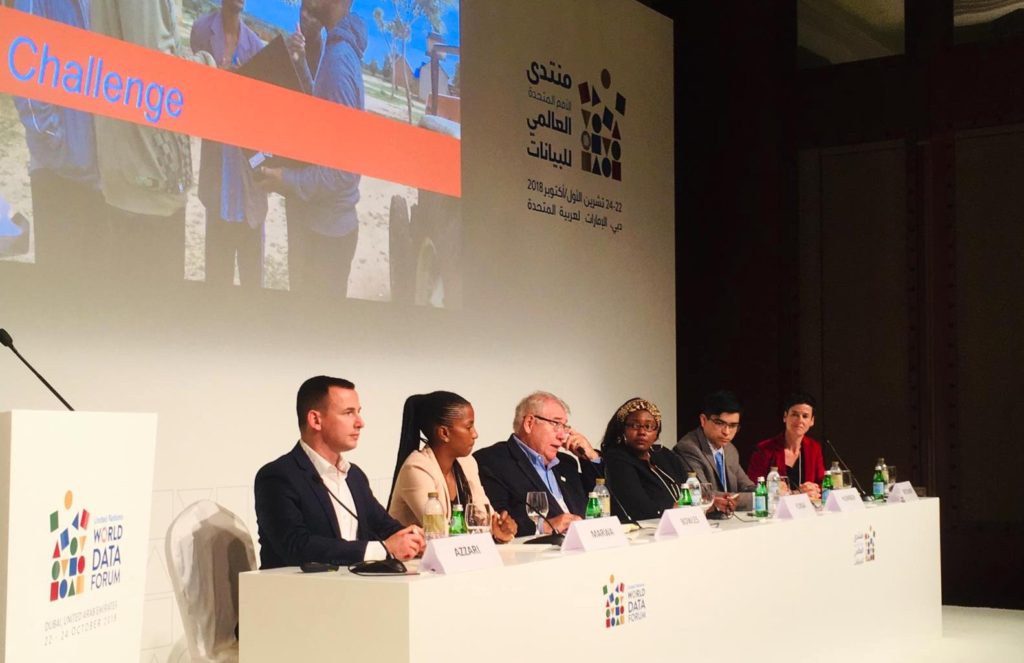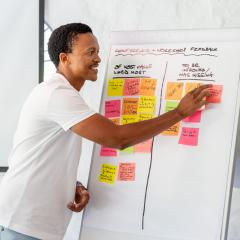
Sharing Drones for Agriculture experiences at UNWDF 2018
November 21st, 2018

In the last 7 months, WeRobotics, Tanzania Flying Labs and Agrinfo have been gathering field data in rural Tanzania for the NASA Harvest Consortium’s “Pre-Harvest loss for smallholder farmers” initiative in collaboration with IFPRI and University of Maryland. Data acquisition included 2 rounds of multispectral drone data and 3 rounds of ground truthing data, including data on farm boundaries, crop variety and harvest volumes. Throughout these data acquisition cycles, we have learned quite a bit and have faced challenges we did not expect, making the actual data acquisition process as much of a valuable learning experience as the actual outcomes of this pilot research . Watch our field experiences in our latest video here:
https://www.youtube.com/watch?v=B3JJrvTBMV0
The project team met up at the end of October in Dubai, to share our experiences at the UN World Data Forum in a session called “From Pixel to Crop: How to mitigate pre-harvest loss for African smallholder farms using synergies across different data communities”. Texas A&M AgriLife and Stanford Earth/AtlasAI joined our panel for this session to add their experiences and knowledge and allow for a rich exchange of experiences and lessons from the use of various data sources and systems to address pre-harvest loss.
Michael Humber and Ritvik Sahajpal of the University of Maryland, whose team is leading the NASA Harvest Consortium’s collaboration in Tanzania with Summer Allen and Soonho Kim of IFPRI, presented the following challenges and first findings based on the data collected in Tanzania:
- Measuring plot boundaries by walking with farmers is time- and labor-intensive. Improved boundary mapping is required to calibrate yield at the farm scale.
- High resolution satellite data available on the areas of interest suffer from poor atmospheric calibration.
- Satellite and drone data generate a large volume of data, which requires efficient data management.
- Farmer recall of prior years’ production could potentially be an issue in calibrating models for yield forecasting (UMD are finalizing results in the coming months).
Following UMD’s introduction and challenges, Rose Funja, CEO of Agrinfo and Ghati Marwa, Drone Data Specialist of Tanzania Flying Labs shared their experiences from the field:
- Challenges faced during data acquisition:
- Invisible farm boundaries: In order to calculate yield, determining farm sizes was priority however this exercise had to be done by physically walking the farms boundary with the farmer and handheld GPS (Global Positioning System) mainly because the boundaries are not well defined for the exercise to be done digitally.
- Non standard metric: During the survey the respondent self-reported land area was taken in to account however we quickly realised that there was confusing between acreage and hectare and that the farmers do measure their farm plots by walking 70 feet wide and 70 feet length and then equate it to an acre.
- Intercropping: while our work initially focused on Maize, extensive intercropping was discovered during the field work, impacting directly the outcomes of the results as the spectral signal for each individual crop becomes obfuscated by other crops.
- Drone and ground truthing data challenges:
- Completeness: during processing it was found that there was a gap between what was expected and what was collected. The three kinds of data collected were interview- survey data, farm boundary with GPS and drone data. Of the latter, two types of data were not always complete especially in cases that the farmer was interviewed at the household and failed to meetup with the enumerator on the farm plot to complete the farm boundary data collection.
- Accuracy: For every farm, three data sets were collected and had to be manually aligned: an interview-style survey, the farm boundary and drone imagery.
- Consistency: The drone imagery as well as the interview survey was done multiple times and there have been cases where for a given farm plot, different respondents gave different information which needed alignment.
 UNWDF Panel Session featuring George Azzari, Ghati Marwa, Juan Bowles, Rose Funja, Michael Humber and Sonja Betschart
UNWDF Panel Session featuring George Azzari, Ghati Marwa, Juan Bowles, Rose Funja, Michael Humber and Sonja Betschart
Presentations from Dr. Juan Landivar Bowles (Texas A&M AgriLife) on his extensive experiences with Unmanned Aircraft Systems for Agriculture Research and Precision Management as well as Dr. George Azzari (Stanford Earth / Atlas AI) on current solutions and challenges with large-scale, fine-resolution yield predictions from satellite rounded out the “application and experience” focused session which was then led into an open and lively discussion between the panelists and the participants.
We now look forward to more detailed results from UMD and IFPRI on the first outcomes of our joint “Pre-Harvest Loss” project in Tanzania and would like to thank all involved in helping us create a compelling and practice-oriented session at UN World Data Forum 2018.
Location(s):
Recent Articles

